Christ commanded His church to make disciples of every nation, taking the gospel around the world. Christ’s Church is a church of missionaries. All of us are called to share the good news of Jesus to a world that is lost and dying. Some have taken up the call to go out to all the corners of the globe, while many of us join in by supporting them, praying for them, and sharing the gospel right where we are.
Disclosure: *This post may include affiliate links. As an affiliate, I earn from qualifying purchases. Read the disclosures and terms for more information.
No matter what our lives are like now, if we love Jesus and believe in His heart for this world, knowing and sharing the stories of Christian missionaries is essential. Jesus sent His disciples out as missionaries. He left His Church with the Great Commission. Parents, we must share these stories with our children! It will teach them the important nature of the work and set before them examples of godly men and women.
We want our kids to know these people and these stories. We also want them to know about modern-day missionaries and join with us in participating in their efforts as God sees fit. While the people themselves are remarkable, it is God’s goodness and sovereignty that take center stage in missionary stories.
[Tweet “It is God’s goodness and sovereignty that take center stage in missionary stories”]
One of the best things you can do for family discipleship is to study missionary biographies. These are not dry or boring tales, but action-packed adventures that will capture your child’s imagination and wow them with seemingly insurmountable obstacles, great dangers, and the miraculous hand of God.
Missionary biographies are also amazing resources for building fun and educational unit studies for your homeschool. Just think of all the aspects involved in missionary work that you can use for history, science, math, geography, and more! You’ll be teaching with wonderful living books that bring missionary biographies to life and engage your children. Truly, they will become lifetime memories and a part of your family culture as well.
Would you like some recommendations on books to share with your kids? I put together a list of books and resources you can use to teach about missionaries, as well as freebies including missionary biography notebooking pages that you can download!
Here are some ways you can do homeschooling with missionary biographies:
- Use Christian biographies for read aloud time
- Use a missionary-focused devotional at mealtimes
- Set up a map in the dining room and mark mission locations
- Watch videos or listen to audiobooks about missionaries
- Do a unit study on a missionary study
- Write up a report on a missionary biography
- Learn more about your church’s missionaries and seek out ways to support them
- Do a family fundraiser to give to a favorite mission project
- Learn about how you can be missionaries right where you are
- Consider a short-term family missions trip
There are so many possibilities!
If you pick up a Christian missionary biography, in no time you’ll be able to find launching points for great learning experiences. Putting together a unit study for a missionary biography is actually pretty simple, and it can be so much fun! As you are reading the book, begin jotting down ideas for each of the following areas. Soon you’ll have a unit study to do with your kids! You can start the activities after finishing the book or do them as you go.
[Tweet “Putting together a unit study for a missionary biography is actually pretty simple, and it can be so much fun!”]
Bible and Character
Study or review the reasons why missionary work is so important. Discuss Bible passages that are particularly applicable to the missionary’s life and work. memorize them and identify ways that they can be applied to your own lives. Talk about godly character traits of the missionaries that are worth emulating. Pray for the missionaries in that part of the world and the people they serve.
Reading and Comprehension
Use biographies for read aloud time or audiobooks. If possible, find a version of the story that your child can read and have them read it out loud to the family. Do narrations and presentations of what is learned. Study vocabulary words and answer comprehension questions.
Notebooking and Copywork
Use simple notebooking pages to draw and write about different topics and ideas based on the biography. Complete copywork for portions of the book or of relevant quotes or scriptures. You can often find quotes by the missionary that are wonderful to learn.
Creative Writing
Write a poem or short story using elements and themes from the biography. They could about themselves journeying into a similar situation, or re-write a scene of the book from a different character’s perspective.
Math
Find examples in the story that you can turn into math problems. For example, when studying Jim Elliot’s life, calculate the total travel time and distance from to Shandia. The Piper Cruiser is a fun thing to learn more about! Do a little lesson on aeronautical mathematics. Compare populations of people groups in the story (Missionaries, Aucas, Quechuas, etc.).
History
Study what was happening in the world during the story you are reading. Create a timeline of events for the story and see how it fits into the larger historical timeline. Learn about the history of missionaries in that area of the world or find out what the current events are.
Science
Study plants, animals, or environment topics in the story. Continuing our example of the Jim Elliot biography, the story takes place in the Amazon rainforests of Ecuador! You almost have to learn more about rainforests, snakes, spider monkeys, and all the amazing animals mentioned in the story. Your kids might get a kick out of learning about the worms that were eaten as delicacies. There are other ideas to explore as well, such as how antibiotics work and basic CPR, which the missionaries were trained to use.
Geography and Social Studies
Put up a big map on your wall and mark each missionary story you read or even track their travels. Learn about the countries they are visiting such as major cities, bordering countries, climate, natural features, etc. Print out flags to color, learn a little bit of the language, find out what time it is there right now, and check out books and movies about the country and it’s people. Try making some foods and listening to some music from the culture.
Arts and Crafts
Look up artwork from the cultures you are studying and try mimicking the subjects or techniques. Draw or paint a scene from the story. You might be surprised to find what really stuck in their minds from the reading. Create a diorama, collage, or model of an element from the story. Be creative with it and have fun!
Physical Education
Pick out fun activities, games or exercises you can do based on the story. In the Jim Elliot biography, the Quechua indians played a game where they put a bowl of liquid in their teeth and then had to flip it over their heads without getting wet! Jim wowed them by mastering it on the first try. Get some paper plates and have fun trying! Or go on a family hike and chat about the trek Jim and his companions had to make to get to Shandia the first time, spotting snakes and monkeys on the way.
As you can see, there is a wealth of ideas that you can pull from a missionary biography to put together a unit study for your family. You will create a memorable and educational experience for your children that will point them to Christ! Don’t forget to download your missionary biography notebooking pages and check out more homeschooling tips and resources.

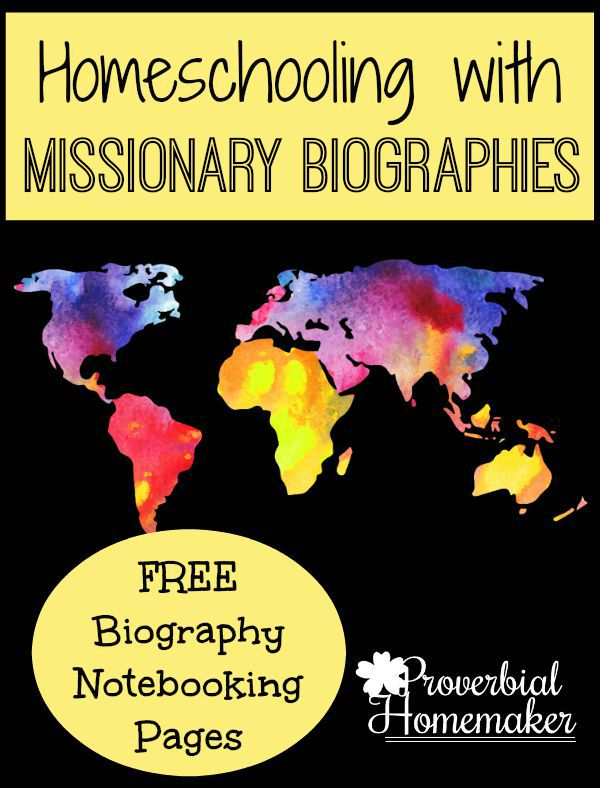
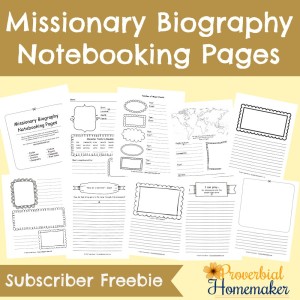
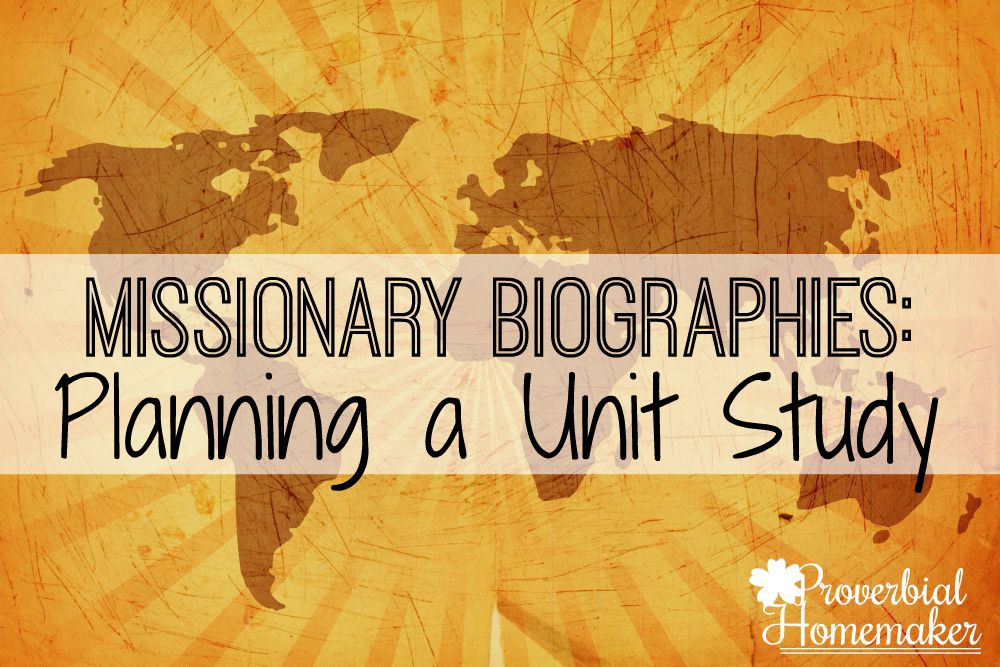



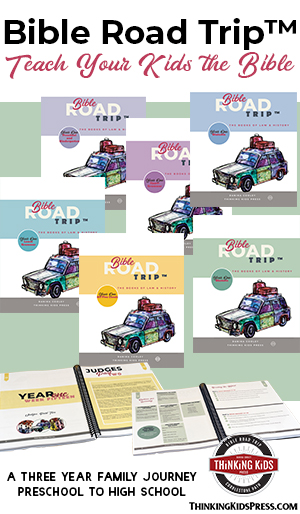
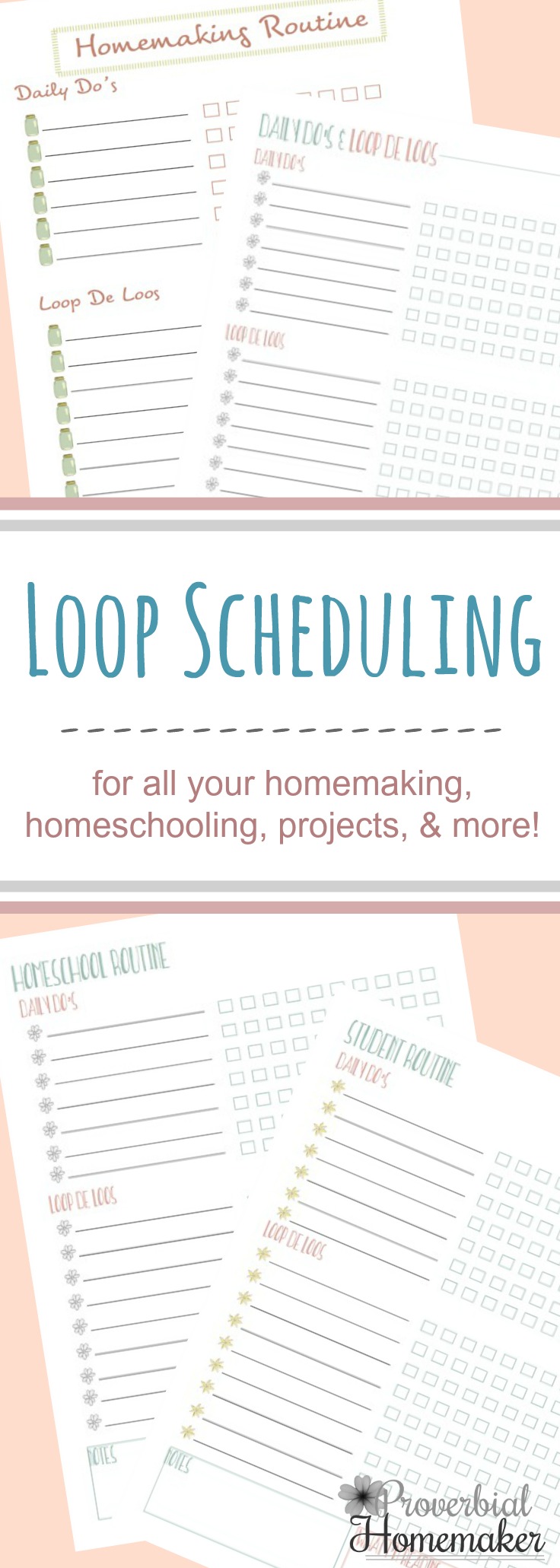

 by Stephanie, The Multi Taskin' Mom
by Stephanie, The Multi Taskin' Mom
This Post Has 4 Comments
Thank you so much for sharing the notebooking pages. We are reading ‘Eric Liddell: Finish the Race’, by John W. Keddie just now, so this will be a fun way the children can write about it.
Wonderful! I’m glad you’re able to use them. 🙂 Thanks for the thoughtful comment!
These are wonderful ideas!!! . We used Hero Tales a few years ago in our curriculum, and I’m bringing it back out because I miss that aspect in our current 6th grade studies. I intend to let my son work through each chapter on his own, and use your note-booking pages to create a report to hand in at the end of the week. Thank you so much for sharing them
Tauna! I just listened to your session on the Wives confer. just yesterday! It was great seeing you!!! Great advice too. Also, I came across your PH site.. and I used your loop scheduling a few years back with my son and 2 granddaughters!
I am so blanking out on this missionary lessons on Wed. night. A friend and I have wanted to do this for a while.
So now here I am… I am searching for a missionary study to do with our elem. age kiddos at church… and started searching Pinterest and got brought here. So I have been asked to do 8-10 lessons on Wed. Nights on “missionaries around the world” the rest of the summer for 4-10 yr olds. 1 hour.
Do you have any kind of recommendations of how to do each night evening…like a schedule ?
I was thinking story, possibly a craft, spotlight the country a little… maybe a story or info. On specific missionary we support.. snack possibly…
Do you have anything that lays everything out each week?
Thanks in advance for any suggestions.. OH and for free or inexpensive… like literally something with the different countries and maybe quick facts or something..